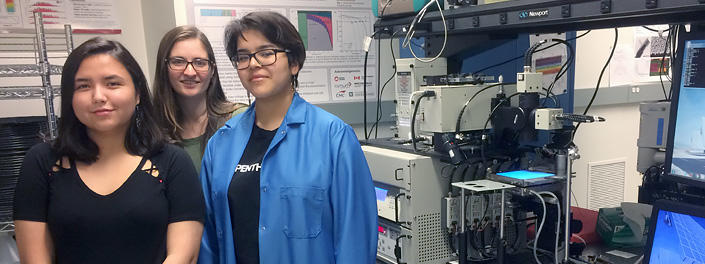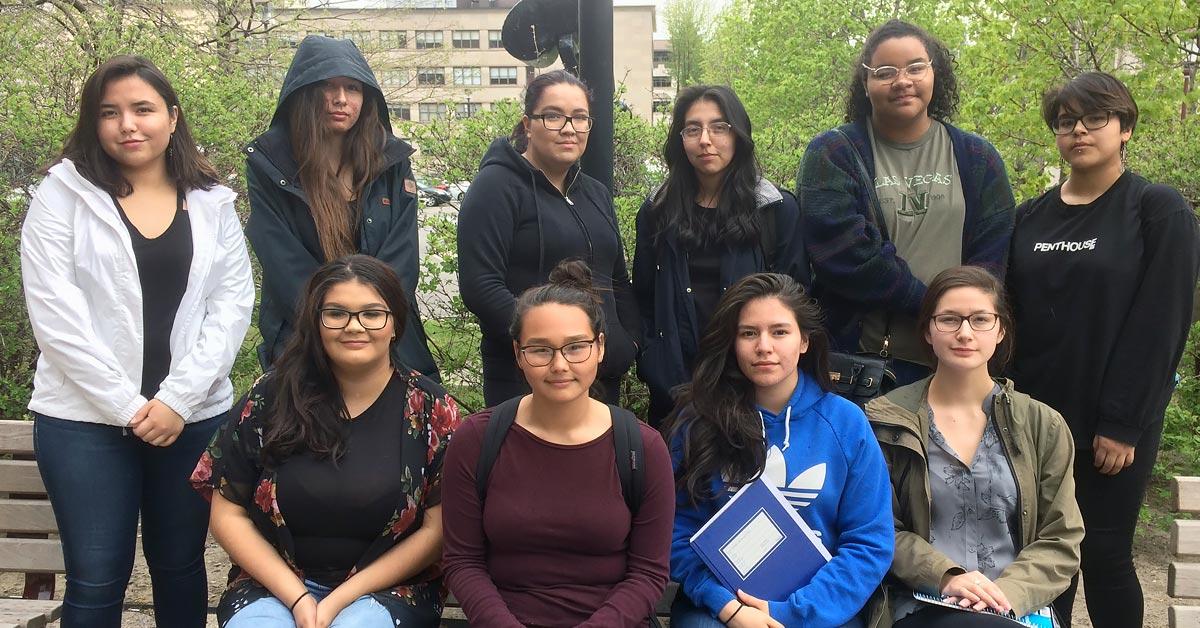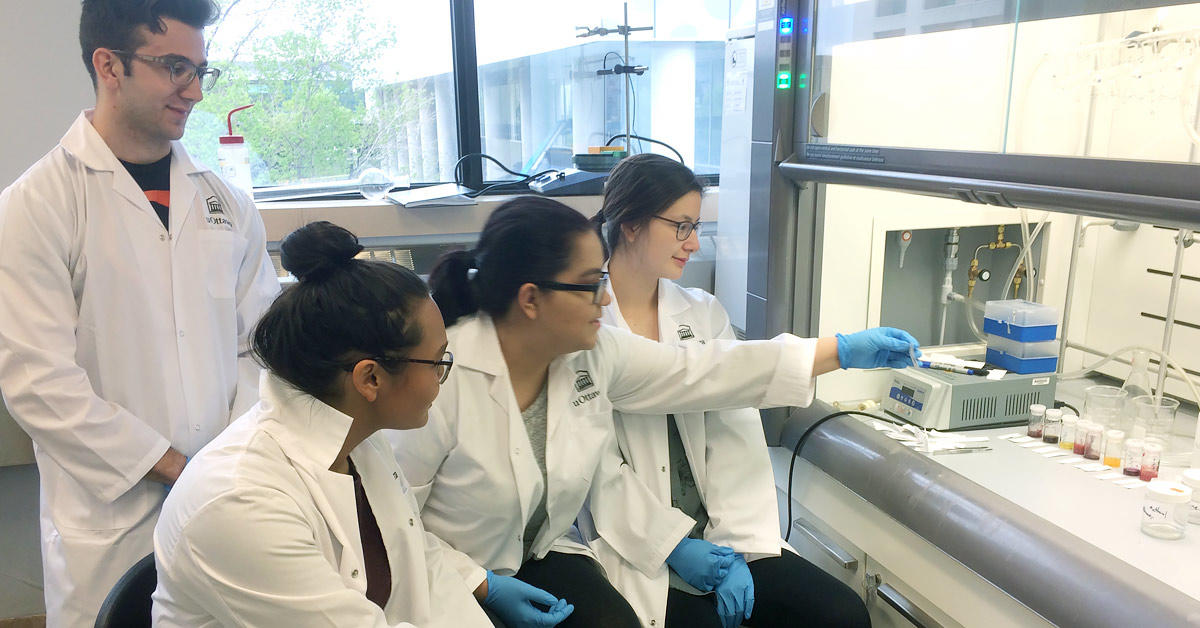

By Mike Foster
A group of Indigenous Grade 11 students visited our campus for an in-depth look at potential academic careers working with lasers, harnessing solar panels, designing medicines or conducting environmental research.
Five uOttawa professors and their research teams mentored small groups of two or three students — all girls — as part of the Verna J. Kirkness Science and Engineering Education Program, which aims to increase the number of Indigenous students graduating from science and engineering programs in Canada.
The Ontario NSERC Chair for Women in Science and Engineering, which is held by University of Ottawa associate professor Catherine Mavriplis, is also sponsoring the lab visits.
The Indigenous girls came from communities such as Norway House Cree Nation, in Manitoba; Wemindji, lylyuu Istchee, on the east coast of James Bay in northern Quebec; the Ottawa region; Rama; Barrie; and Waswanipi.
“The girls will do everything from counting bees in Gatineau Park to measuring solar cells and learning about renewable energy,” said Mavriplis. “On the lighter side, they will learn to use technology to make jewelry in the Makerspace with Indigenous artist Kelly Marsolais. Together with the Indigenous Resource Centre, we hope to give these girls a glimpse of what science and engineering studies could be like on a university campus and inspire them to pursue postsecondary degrees. At the same time, we learn about their communities and cultures.”
Manipulating molecules to diagnose disease
Grace Salomonie, an Inuk student from Nunavut, said, “It is an unfortunate truth that Indigenous youth scarcely receive postsecondary education. Studying science is important to me and my family because not many Indigenous people enter science programs.”
Salomonie, Tyra Moses and Kelsee Arthurson, from Norway House Cree Nation, chose to learn how to manipulate molecules to diagnose disease and probe biochemistry with Adam J. Shuhendler, a professor in the Department of Chemistry and Biomolecular Sciences. With help from Zach Comeau, a master’s student in chemical engineering, they tested compounds on litmus paper as a precursor to possibly finding biomarkers to diagnose concussion.
“I’m leaning towards wanting to study biology,” said Salomonie. “I didn’t realize how much I enjoyed chemistry until this program.”
This is the first time uOttawa has hosted Indigenous students participating in the program, which was created in 2009 by Verna J. Kirkness, a scholar and member of the Fisher River Cree Nation.
“As our people seek to be self-sufficient, it is important that expertise in these fields is available in the community,” says Kirkness. “Elders participate in the program, providing cultural grounding in science to help the students understand how important science has always been to our people.”
You can support future cohorts of this program and similar initiatives that encourage women to pursue careers in science and engineering by making a contribution.
